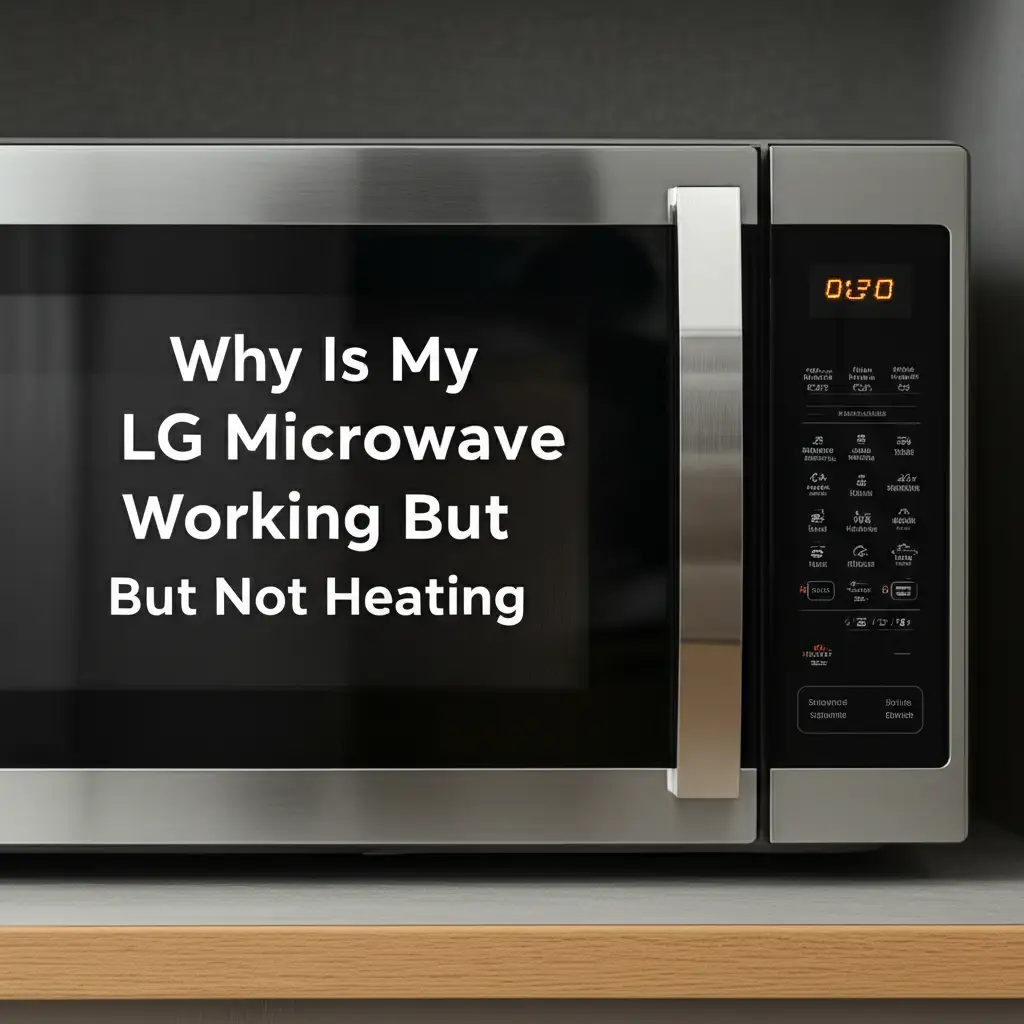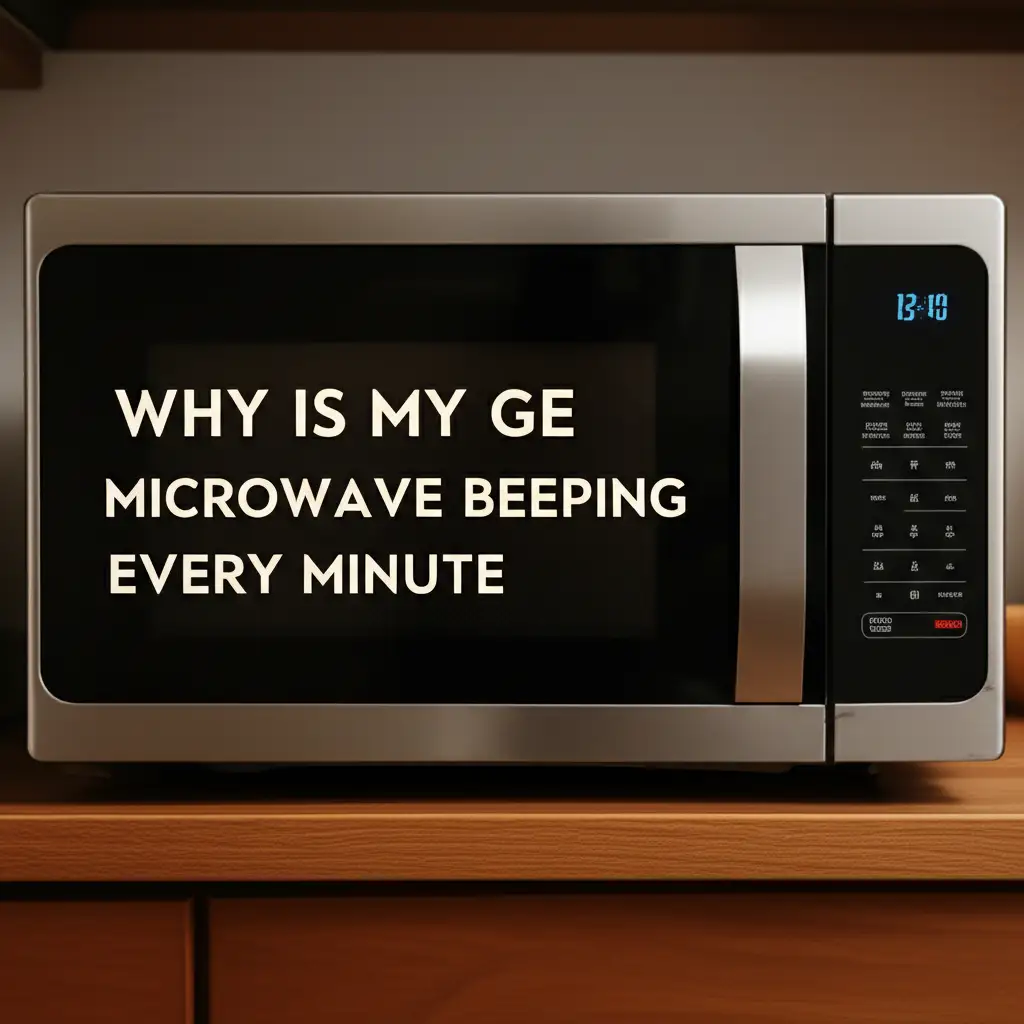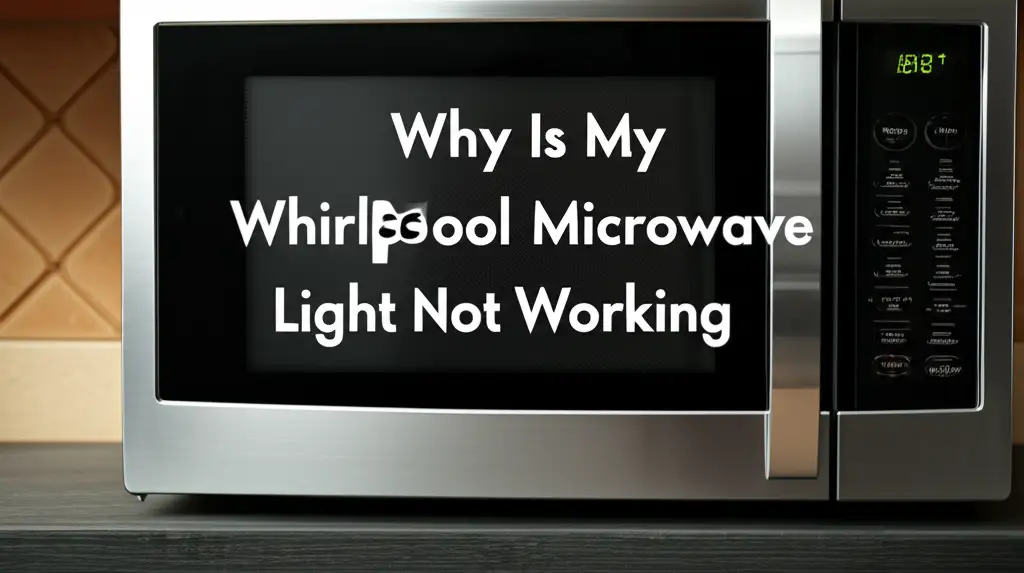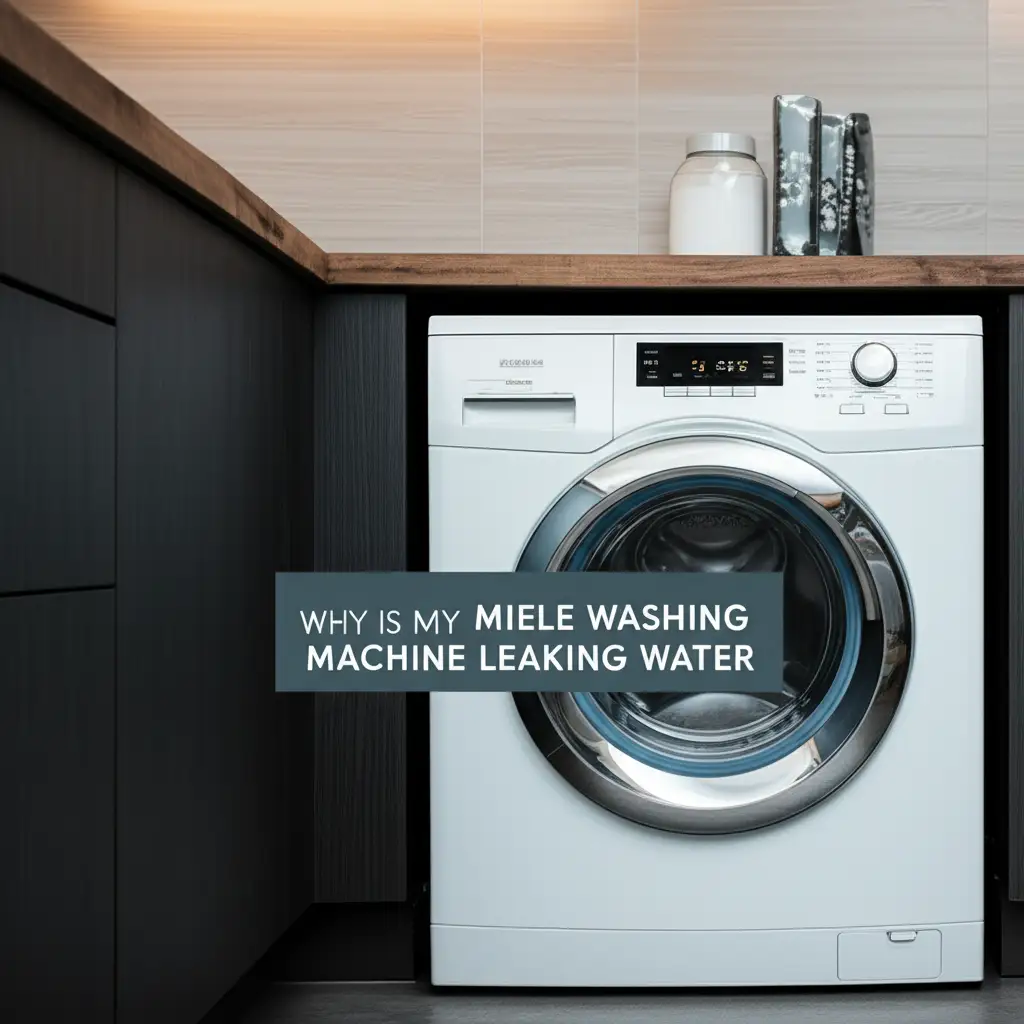· Katria Melrose · Appliance Repair · 16 min read
Why Is My Sharp Microwave Turning On But Not Heating
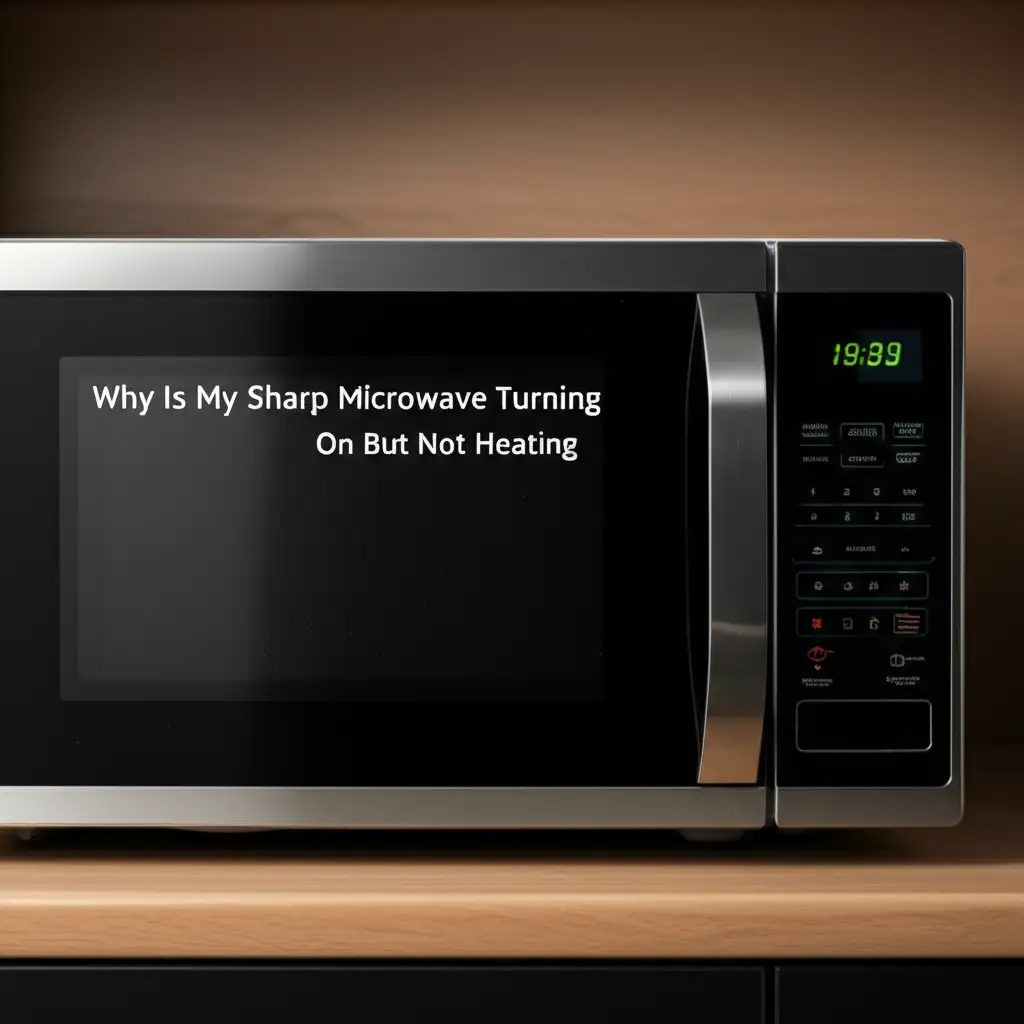
Troubleshooting Your Sharp Microwave: Power On, No Heat
Imagine heating up a quick meal, but your Sharp microwave turning on but not heating your food. The light comes on, the turntable spins, and the timer counts down. Still, your leftovers remain stone cold. This common household appliance problem can be very frustrating. It often indicates a specific internal component failure, rather than a total power loss.
My goal is to help you understand why your Sharp microwave behaves this way. We will explore the common culprits, from simple user errors to more complex internal part malfunctions. I will guide you through safe troubleshooting steps. You can often identify the problem yourself. Sometimes, you might even fix it. Knowing the reasons can save you time and money. It prevents unnecessary repair calls or replacing a perfectly good appliance. Let us get your microwave working properly again.
Takeaway
When your Sharp microwave powers on but does not heat, the problem often lies with high-voltage components.
- Always unplug the microwave before any inspection or repair.
- Discharge the high-voltage capacitor to prevent electric shock.
- Check simple issues first, like door interlock switches or thermal fuses.
- High-voltage components like the magnetron, diode, or transformer commonly fail.
- Consider professional help for high-voltage repairs due to safety risks.
A Sharp microwave turning on but not heating typically means a fault in its high-voltage circuit. The most common failures involve the magnetron, high-voltage diode, capacitor, or transformer. Less often, it could be faulty door interlock switches or a tripped thermal fuse. Always prioritize safety when inspecting these components.
Understanding Microwave Heating: The Basics of Operation
Microwaves work by producing electromagnetic waves that excite water molecules in food. This process generates heat. It happens very quickly. My Sharp microwave, like others, relies on several key components to achieve this.
The main component is the magnetron. This part generates the actual microwaves. It needs a very high voltage to operate. This high voltage comes from a transformer, which steps up the standard household electricity. A capacitor and a diode work with the transformer. They store and rectify this high voltage. They ensure the magnetron receives the correct power.
The microwave energy then passes through a waveguide. It goes into the cooking cavity. Inside, a stirrer or turntable helps distribute the waves evenly. If any part of this system fails, the microwave may still appear to function, but it will not heat. The display works, the light turns on, and the turntable spins. However, the essential heating process stops. Understanding these parts helps you pinpoint the problem when your Sharp microwave turns on but does not heat.
Safety First: Essential Precautions Before Troubleshooting
Working inside a microwave can be very dangerous. It contains components that store extremely high voltage, even after unplugging. This stored energy can deliver a severe, even fatal, electric shock. I always emphasize safety above all else. Do not attempt internal repairs if you are uncomfortable or lack proper electrical knowledge.
Before you touch anything inside your Sharp microwave, always unplug it from the wall outlet. This removes all power from the unit. Next, you must discharge the high-voltage capacitor. This component stores a powerful electrical charge. Even if the microwave has been unplugged for hours, the capacitor can still hold enough charge to injure you. Use a ceramic-bodied resistor or an insulated screwdriver with a jumper wire to safely discharge it. You connect one end to the capacitor’s terminal and the other to the microwave chassis. I always do this procedure twice to ensure the capacitor is fully discharged. Wear insulated gloves and safety glasses. Take your time and be careful. Your safety is much more important than a quick fix.
Initial Checks: Simple Solutions for Your Sharp Microwave
Sometimes, the problem of a Sharp microwave turning on but not heating has a simple solution. Before you dive into complex diagnostics, check these basic things. They often solve common issues without needing a repair person. I always start with these first.
First, try a soft reset. Unplug your microwave from the wall outlet. Wait for about 5 minutes. Then plug it back in. This can sometimes clear minor electronic glitches. Think of it like restarting your computer. It can resolve temporary software issues. If a simple reset does not fix it, you can explore more detailed reset procedures. Some Sharp models have specific button combinations for a hard reset. You can find more information on how to reset your Sharp microwave oven by clicking here.
Next, inspect the microwave door. The door must latch completely for the microwave to heat. Look for any visible damage to the door itself or the latch mechanism. Sometimes, food debris can prevent the door from closing properly. Wipe down the door frame and the latches. Ensure nothing obstructs the closure. A loose or faulty door can prevent the heating cycle.
Test the power outlet. Plug another small appliance into the same outlet. See if it works. This confirms the outlet supplies power correctly. If the outlet is fine, the problem lies within the microwave. These initial checks are easy to perform. They rule out the simplest causes.
The Door Interlock Switches: A Common Culprit
Door interlock switches are critical safety devices in your Sharp microwave. They ensure the microwave only operates when the door is securely closed. Most microwaves have three of these switches. They are located around the door latch assembly. When you close the door, these switches engage. They complete a circuit that allows power to flow to the high-voltage components.
If even one of these switches fails, the magnetron will not receive power. This means your microwave will turn on, the light will work, and the turntable might spin. However, it will not produce microwaves. The safety circuit prevents heating. The microwave thinks the door is open. Over time, these switches can wear out or become misaligned. They are often subject to repeated stress from opening and closing the door.
Testing these switches requires a multimeter. First, unplug the microwave and discharge the capacitor, as I mentioned earlier. You can usually access these switches by removing the microwave’s outer casing. With the multimeter set to continuity mode, test each switch individually. When the switch button is pressed (mimicking a closed door), it should show continuity. When released, it should show no continuity. If any switch fails this test, it needs replacement. This is a common reason why your Sharp microwave turns on but does not heat.
Examining the High-Voltage Diode: Power Flow Issues
The high-voltage diode is a small but vital component in your Sharp microwave’s heating circuit. It works with the capacitor and transformer. Its job is to convert alternating current (AC) into direct current (DC). This conversion helps create the extremely high voltage needed for the magnetron. Think of it as a one-way valve for electricity. It allows current to flow in only one direction.
If the high-voltage diode fails, it can prevent the magnetron from receiving enough power. A faulty diode might cause the microwave to hum loudly but not heat. It might also cause a burning smell or trip your circuit breaker. The diode often fails by shorting out or opening up. A shorted diode can cause the fuse to blow or the transformer to overheat. An open diode simply stops the current flow.
Testing the high-voltage diode also requires a multimeter. However, standard multimeters cannot accurately test microwave diodes in circuit. They operate at very high voltages not easily replicated. The best way to check a diode is often by visual inspection for signs of burning or cracking. For a more definitive test, some technicians use a higher voltage source or simply replace it if other components seem fine. Given its low cost, many opt to replace it if other troubleshooting steps do not identify the issue. Always remember to discharge the capacitor before working near the diode.
Troubleshooting the High-Voltage Capacitor: Storing the Charge
The high-voltage capacitor is another critical part of the heating system. It stores electrical energy. It works in conjunction with the high-voltage transformer and diode. Together, these components amplify household voltage to the extreme levels needed by the magnetron. The capacitor stores an enormous electrical charge. This allows it to release power rapidly. This sudden burst of power is what energizes the magnetron to create microwaves.
A faulty capacitor is a common cause of a Sharp microwave turning on but not heating. If the capacitor fails, it cannot store or release the charge effectively. This means the magnetron does not get the power it needs. A failed capacitor can show several symptoms. It might bulge, leak oil, or have burn marks. Sometimes, it fails internally with no visible signs. A bad capacitor can also cause a loud buzzing noise from the microwave. In some cases, it can even cause the microwave’s internal fuse to blow.
Testing a capacitor requires a multimeter with a capacitance setting. First and most importantly, discharge the capacitor fully. Then disconnect its wires. Set your multimeter to capacitance mode. Connect the probes to the capacitor terminals. The reading should match the microfarad (µF) rating printed on the capacitor. A reading significantly different or zero indicates a bad capacitor. Remember, even after unplugging, capacitors retain dangerous voltage. Always discharge it before touching. Replacing a capacitor is possible, but extreme caution is vital.
Testing the Magnetron: The Heart of Microwave Heating
The magnetron is the component truly responsible for heating your food. It is a vacuum tube that converts high-voltage electrical energy into microwave radiation. Without a working magnetron, your Sharp microwave will power on and seem to operate, but it will never generate heat. This is the most common reason why your Sharp microwave turning on but not heating. If everything else seems okay, the magnetron is often the culprit.
Magnetrons can fail for several reasons. Overheating is a primary cause. This can happen if you run the microwave empty or if the cooling fan malfunctions. Sometimes, simply aging components lead to failure. Signs of a bad magnetron include the microwave running but not heating, a burning smell, or sparking inside the microwave cavity. The spark often comes from a damaged antenna on the magnetron itself.
Testing a magnetron is difficult and dangerous without specialized equipment. I do not recommend it for the average homeowner. Visually, you can check for burn marks or damage around the antenna or cooling fins. If you notice a burning smell, this is often a strong indicator. It is usually more practical and safer to replace the magnetron if other high-voltage components test fine. Always ensure the capacitor is discharged before approaching the magnetron. This component holds significant risk due to the high voltage it requires.
Thermal Fuses and Thermostats: Overheat Protection
Sharp microwaves, like other models, have safety mechanisms to prevent overheating. Thermal fuses and thermostats are crucial parts of this system. A thermal fuse is a one-time safety device. If the microwave’s internal temperature exceeds a safe limit, the fuse blows. This breaks the electrical circuit, cutting power to the high-voltage components. Once a thermal fuse blows, it must be replaced. It cannot be reset.
Thermostats, also known as thermal cutouts, work similarly but can reset automatically. They are typically found near heat-generating components like the magnetron or transformer. If the temperature gets too high, the thermostat opens the circuit. Once the temperature drops to a safe level, it closes the circuit again. However, if a thermostat fails, it might remain open permanently. This would prevent the microwave from heating.
You can often find multiple thermal fuses or thermostats. They are located in different parts of the microwave. Common locations include the magnetron housing, the high-voltage transformer, or near the exhaust vent. To test them, you need a multimeter set to continuity mode. After unplugging the microwave and discharging the capacitor, disconnect the wires from the fuse or thermostat. Place the multimeter probes on the terminals. A working fuse or closed thermostat should show continuity. If there is no continuity, the component is bad and needs replacement. If a thermal fuse has blown, it is important to find the root cause of the overheating. Otherwise, the new fuse will likely blow too.
The High-Voltage Transformer: Stepping Up the Power
The high-voltage transformer is a large, heavy component in your Sharp microwave. Its job is to significantly increase the standard household voltage. It takes the typical 120 volts from your wall outlet and steps it up to thousands of volts. This incredibly high voltage is essential for operating the magnetron. The transformer works by using electromagnetic induction. It converts low-voltage, high-current power into high-voltage, low-current power. This power is then sent to the high-voltage capacitor and diode circuit.
If the high-voltage transformer fails, the magnetron will not receive the necessary power. This means your Sharp microwave will turn on but not heat. A faulty transformer can manifest in several ways. You might hear a loud humming or buzzing sound. You might also notice a burning smell. Sometimes, a visibly scorched or melted transformer is evident. A common sign of transformer failure is when it causes the microwave’s fuse to blow repeatedly. It indicates an internal short.
Testing a high-voltage transformer involves checking its primary and secondary windings for continuity. This process requires a multimeter and proper safety precautions. Given the extreme voltage it handles, working with the transformer is inherently risky. I strongly advise extreme caution. If you suspect the transformer is the issue, it is often best to consult a professional technician. Repairing or replacing this component can be complex and dangerous for those without specific training.
When to Call a Professional: Knowing Your Limits
While I encourage troubleshooting, there are clear times when you should call a professional appliance technician. The high-voltage components inside a microwave can be extremely dangerous. They pose a significant risk of electric shock, even a fatal one. If you are uncomfortable working with electricity, or if you are unsure about any step, please do not proceed. Your safety is paramount.
Here are specific situations when professional help is the best choice:
- High-Voltage Components: If your troubleshooting points to issues with the magnetron, high-voltage transformer, high-voltage capacitor, or high-voltage diode, consider calling a pro. These parts involve thousands of volts. They require specialized tools and knowledge for safe handling and testing.
- Lack of Proper Tools: If you do not have a multimeter or other necessary testing equipment, accurate diagnosis becomes difficult. Guessing at repairs can lead to further damage or safety hazards.
- Uncertainty or Discomfort: If you feel uneasy at any point during the troubleshooting process, stop. A professional technician has the experience to diagnose and fix the problem safely.
- Repeated Blown Fuses: If your microwave keeps blowing fuses, especially after replacing them, it indicates a serious underlying electrical problem. This often points to a short in a major component, which a professional should address.
- Cost vs. Repair: Sometimes, the cost of parts and labor for an older microwave might approach the cost of a new unit. A technician can provide an estimate. This helps you make an informed decision.
Remember, a non-heating microwave might be frustrating, but it is not worth risking your safety. Professionals have the training to safely handle these powerful appliances.
Frequently Asked Questions (FAQ)
Why does my Sharp microwave run but not heat up?
Your Sharp microwave runs but does not heat usually because a core component in the high-voltage circuit has failed. The magnetron, which generates microwaves, is the most common culprit. Other failures can include the high-voltage diode, capacitor, or transformer. Less often, faulty door interlock switches or a blown thermal fuse are the cause.
Can I fix a microwave not heating myself?
You can sometimes fix a microwave that isn’t heating yourself, especially for simple issues like door switch malfunctions or a tripped thermal fuse. However, internal components like the magnetron, capacitor, and transformer carry extremely high voltage. This poses a serious risk of electric shock. I strongly advise extreme caution. Only attempt repairs if you are knowledgeable and comfortable with electrical work and can discharge the capacitor safely.
What is a magnetron and how does it fail?
A magnetron is a vacuum tube in your microwave that converts electrical energy into microwave radiation. This radiation cooks your food. It can fail due to overheating, internal short circuits, or simply old age. Signs of failure include the microwave running but not heating, buzzing noises, or a burning smell. Replacing a magnetron often resolves the no-heat issue.
How much does it cost to repair a microwave that isn’t heating?
The cost to repair a microwave that isn’t heating varies. It depends on the failed component and labor rates. Parts like a magnetron or transformer can be expensive, often ranging from $50 to $200 for the part alone. Professional labor can add another $100 to $200. Sometimes, buying a new entry-level microwave becomes a more cost-effective option than extensive repairs.
Is it safe to use a microwave that isn’t heating?
No, it is generally not safe to continue using a microwave that is turning on but not heating. The problem indicates a malfunction in a critical internal system. Continued use could exacerbate the issue, potentially leading to smoke, sparks, or even a fire hazard. Unplug the microwave immediately and address the problem.
How can I prevent my microwave from failing?
You can prevent microwave failure by following proper use and maintenance. Do not run the microwave empty, as this can damage the magnetron. Ensure the door closes properly and clean it regularly. Wipe down the interior to prevent food buildup. Consider using proper cleaning techniques like those found in articles on how to clean microwave stains. This helps extend the life of your appliance.
Conclusion
When your Sharp microwave is turning on but not heating, it can be quite frustrating. I understand you rely on this appliance for quick meals. We have covered the most common reasons behind this problem. These include faulty door interlock switches, a blown thermal fuse, or issues with the high-voltage components like the magnetron, diode, capacitor, or transformer. Each part plays a vital role in generating the heat needed to cook your food.
Remember, safety is paramount when troubleshooting any appliance, especially a microwave. Always unplug the unit and discharge the high-voltage capacitor before performing any internal checks. Simple troubleshooting steps, like a soft reset or checking the door, can sometimes resolve the issue quickly. However, for complex electrical components, knowing when to call a professional is a smart decision.
By understanding these potential causes, you are better equipped to diagnose the problem. You can decide if a DIY fix is appropriate or if professional help is necessary. Do not let a cold meal get you down. With the right information, you can get your Sharp microwave back to heating properly again. Get your kitchen routine back on track!


